Pandan is a special ingredient loved by many. Learn how to make pandan juice and pandan extract and how to use them in Thai and Asian cooking in just a few simple steps and using only 2 ingredients!

Learn more about Pandan and how it's used in Thai and other Asian cooking here. Then use your pandan juice in this pandan coconut jelly, mango coconut sticky rice, Thai kabocha squash custard, Kabocha squash with coconut milk and brown sugar simple syrup.
Jump to:
- What is Pandan?
- Pandan In Asian Cooking
- Why Homemade Pandan Extract
- Pandan Juice vs Pandan Extract vs Pandan Essence
- Where to Buy Pandan Leaves
- What Does Pandan Taste Like?
- Ingredients
- How to Make Your Own Pandan Juice
- Making Pandan Extract
- Helpful Kitchen Tips
- How to Use
- Recipes Using Pandan Juice and Extract
- How to Store
- Helpful Kitchen Tools
- Frequently Asked Questions
- How to Make Pandan Juice and Extract
- Making Pandan Extract
- Related Recipes
What is Pandan?
Pandan is a tropical plant that is widely used in Southeast Asian cooking. It is known for its vibrant green color and unique flavor.
A pandan leaf is long and green similar to the shape and size of a palm leaf.

In Asian countries, pandan is considered a staple ingredient in many dishes, both sweet and savory.
It grows best in a tropical climate, which is why it is commonly found in Southeast Asia.
Pandan In Asian Cooking
One of the reasons why pandan (pandanus amaryllifolius) is so popular in Asian cooking is its distinct aroma and taste. It adds a delightful fragrance to dishes, similar to vanilla.
In Asian desserts, pandan is often used to enhance the flavor and give them a vibrant green color. It is truly a versatile ingredient that adds a special touch to any dish it is used in.
Why Homemade Pandan Extract
- Making your own pandan extract and juice is incredibly easy! All you need are a few pandan leaves and water. That's it!
- It's a healthy option. Skip the artificial flavors by creating your own natural pandan extract instead.
- It's versatile. The pandan liquid can be used in numerous recipes, whether you're baking, making desserts, or creating drinks and cocktails.
- It's like Asian vanilla. You can substitute your homemade pandan extract in place of vanilla in various recipes.
Pandan Juice vs Pandan Extract vs Pandan Essence
1. Pandan Juice
Freshly processed from pandan leaves and water in a food processor, this vibrant green liquid is used to flavor drinks, desserts, and savory dishes. It has a unique flavor that is commonly used in Southeast Asian cooking

2. Pandan Extract
Pandan extract is a concentrated liquid that's at the bottom of a pandan juice. When you make your own extract, the Pandan extract is the dark green sediment that has settled at the bottom of the container you use to store the liquid in.

This is the concentrated pandan extract and it has a darker green hue. This part of the liquid has more concentrated pandan flavor a stronger taste than the lighter green juice on the top layer.
3. Pandan Essence
Pandan essence is even harder to find than pandan extract or juice, especially outside of Thailand. It comes in a clear liquid form, similar to concentrated oils like vanilla, coconut, or almond extracts we use here in the US.
The pandan essence has a lovely fragrance and works wonders in baking, coffee, latte, or cocktails. You might be lucky enough to find it at a well-stocked Asian supermarket.
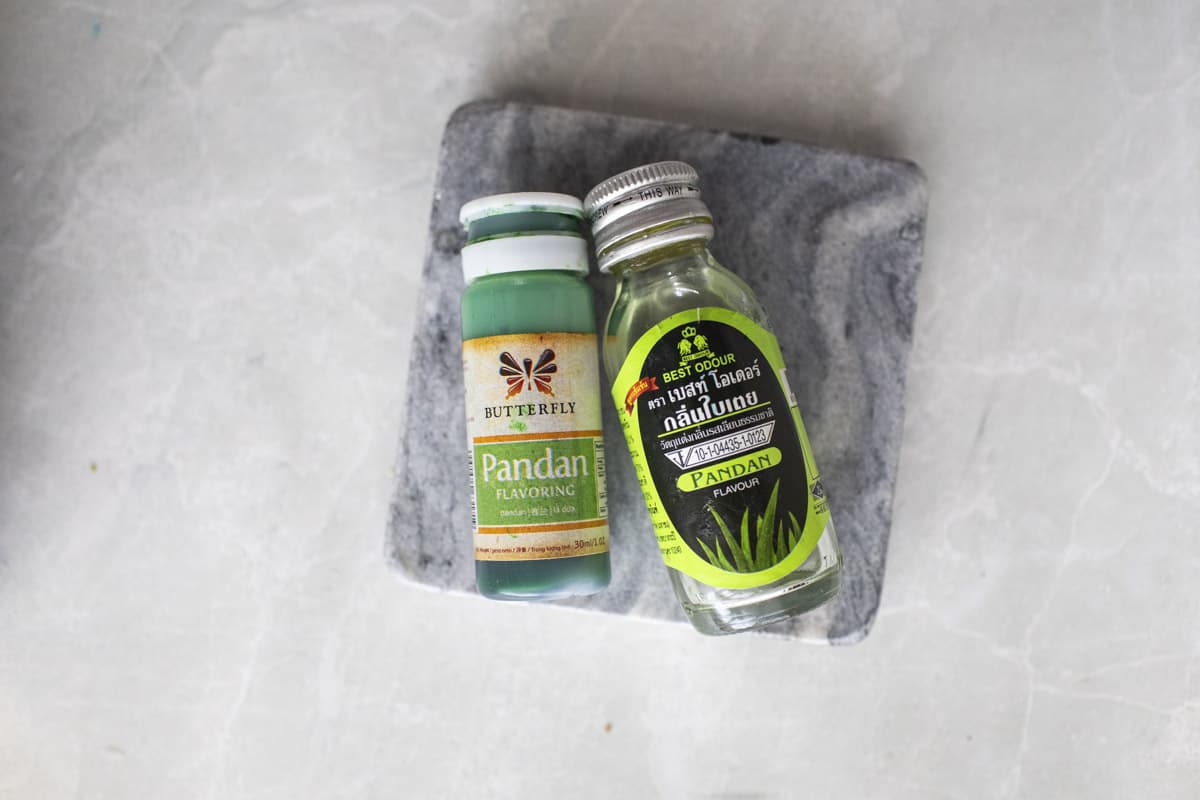
Whenever I visit Thailand, I make sure to stock up on them because they are simply amazing!
Where to Buy Pandan Leaves
Find fresh or frozen pandan leaves at Asian supermarkets or local grocery stores. Pandan extract is also available for purchase online or at specialty food stores.
What Does Pandan Taste Like?
Pandan has a sweet and fragrant taste, similar to vanilla but with a hint of coconut. It also has a slightly nutty flavor. However, fresh pandan juice can have a slightly bitter taste. Overall, pandan has a unique grassy and earthy flavor.
Ingredients
To make pandan juice and extract, you'll need only these simple ingredients when making pandan juice! Just two things, that's it!
- Fresh or frozen pandan leaves. Find these at asian grocery stores in the produce or frozen section
- Water. Use room temperature water.
How to Make Your Own Pandan Juice
1. Wash fresh or frozen pandan leaves thoroughly. Cut the leaves into small pieces.
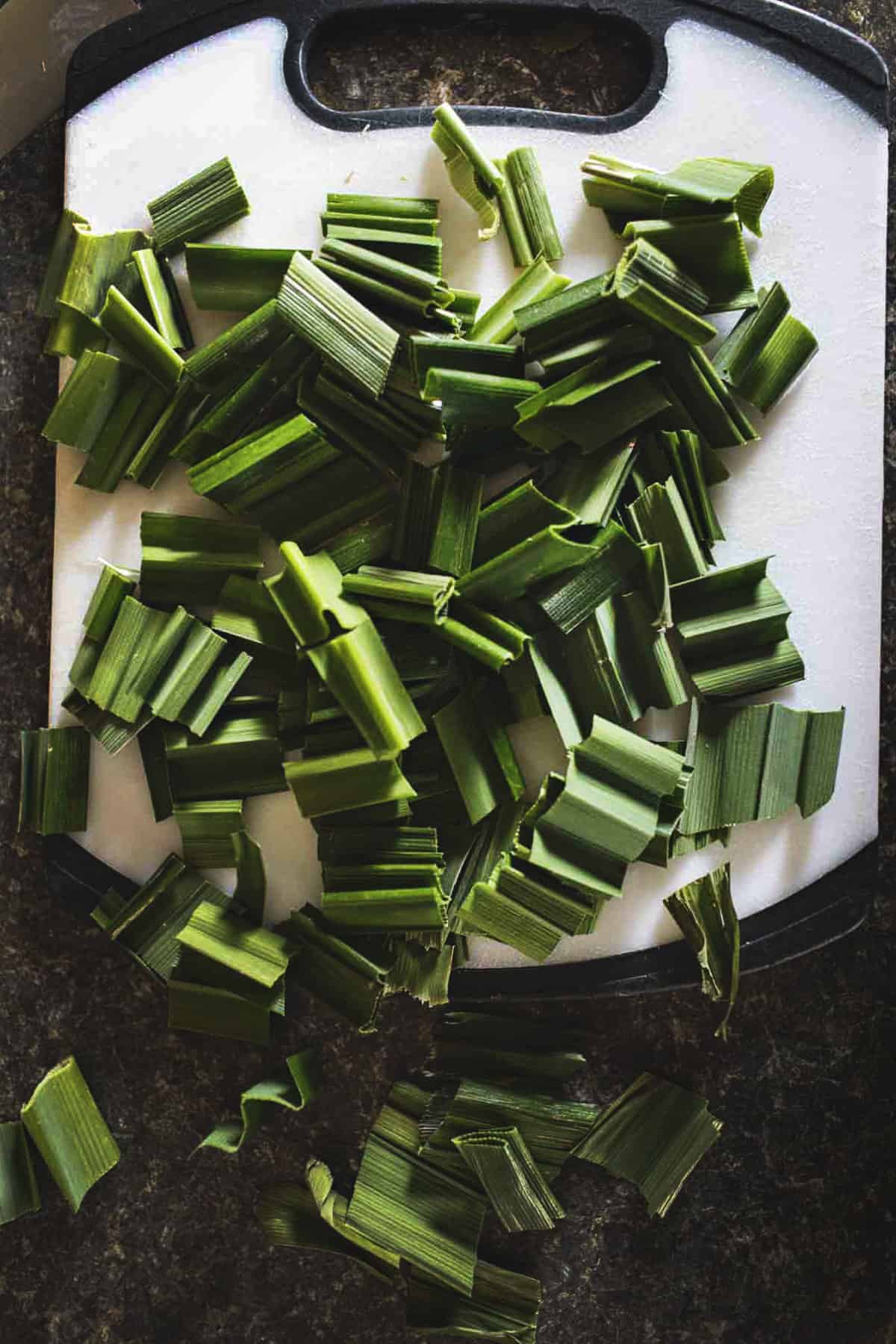
2. Blend the pandan leaves with water on high speed to create a semi-smooth pandan mixture. Semi-smooth because pandan are fibrous and will not turn complete smooth.


3. Strain the mixture through a fine strainer or cheesecloth to extract the juice.
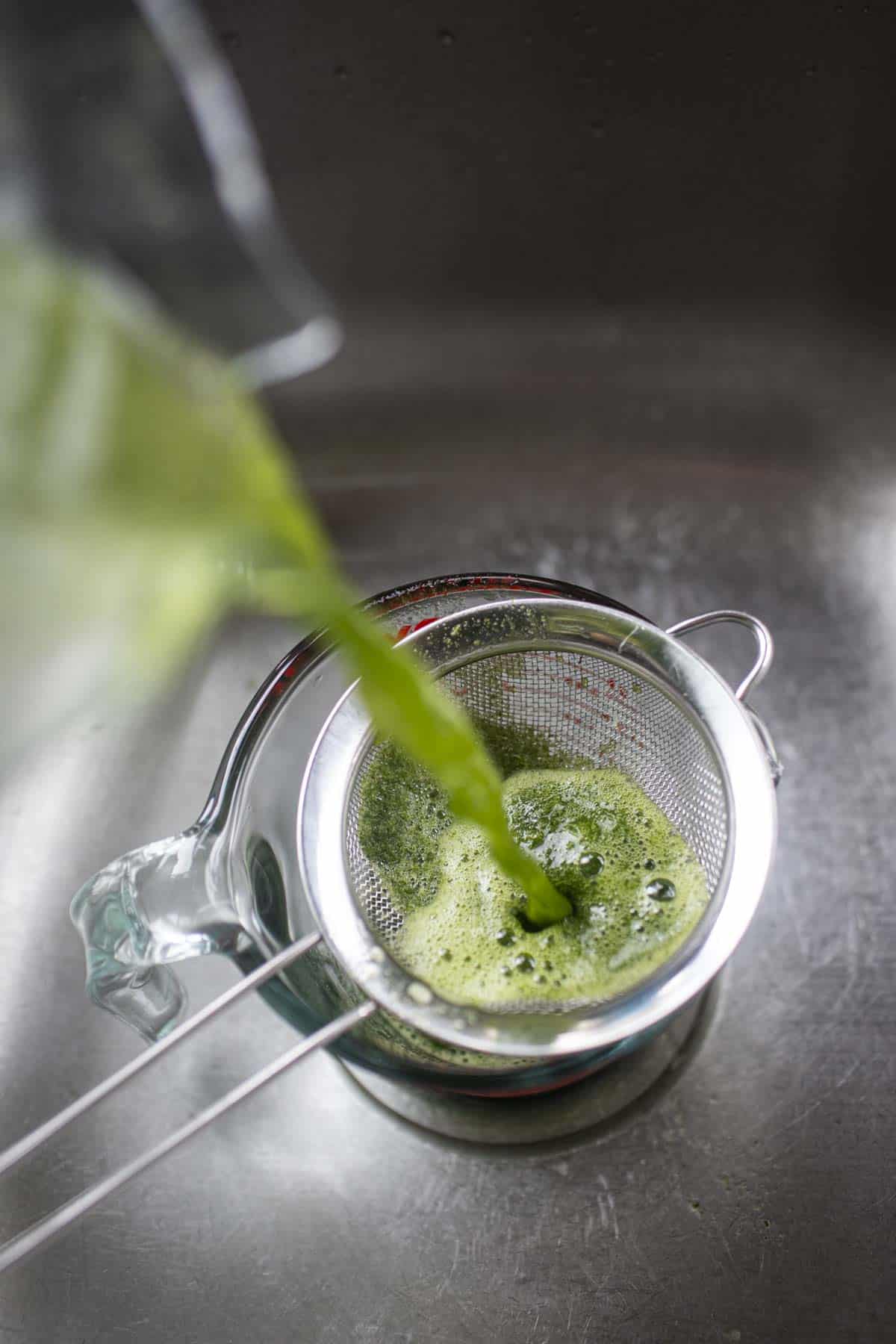
4. Press down on the pandan pulp a bit as there's a lot of green water log in the pandan fibres.

5. Pour the juice into a glass jar and use it right away for a recipe. For later use, store the juice in an airtight container in the refrigerator.
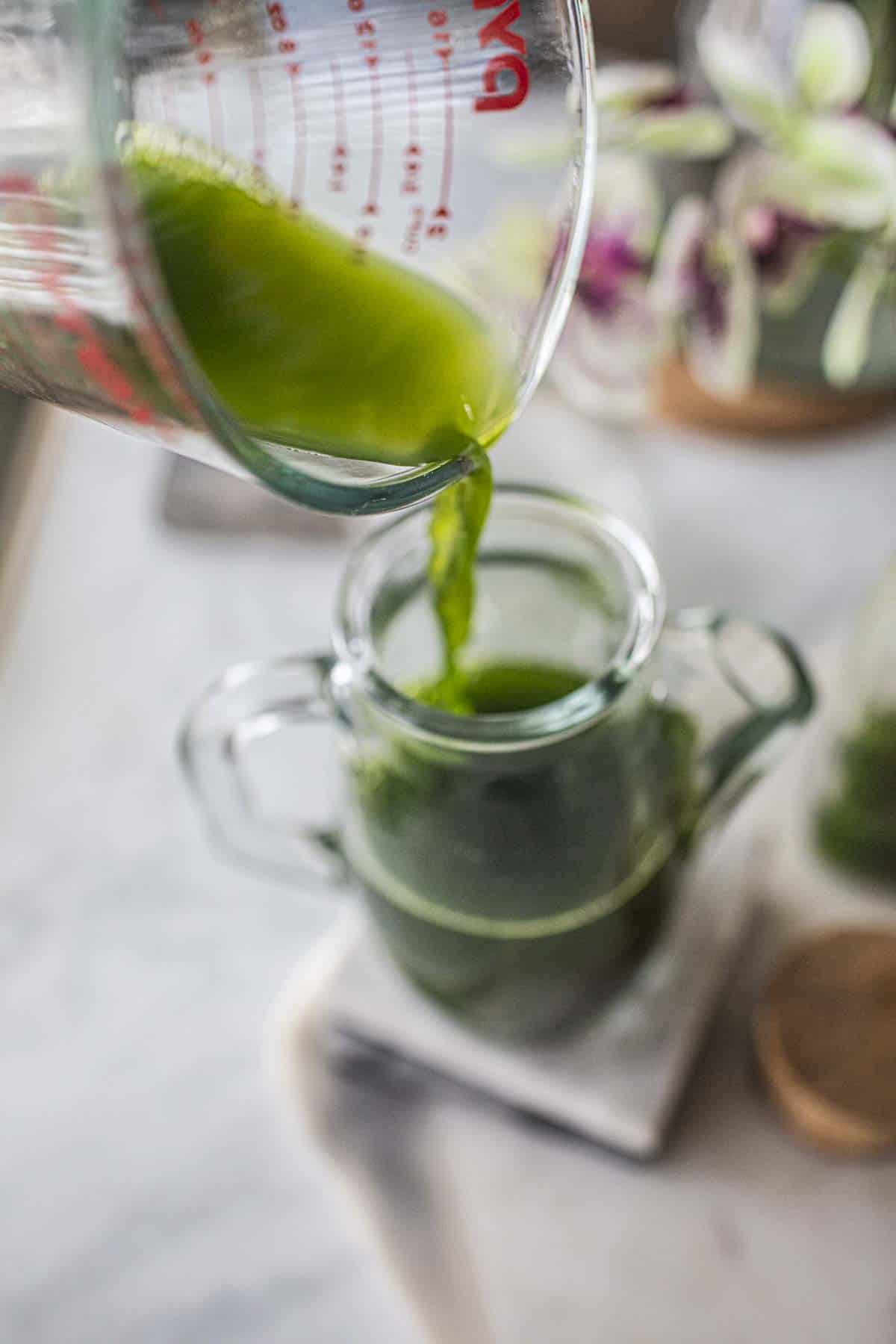
Making Pandan Extract
- Follow the same steps for preparing pandan leaves as for making juice.
- Blend the pandan leaves in a food processor with little water until smooth.
- Strain the liquid then transfer the pandan water into a glass jar.
- Let the liquid sit, covered, for several hours or overnight in the refridgerator.
- You'll see the 2 layers of greens; the top is light green, and the bottom thin layer is the extract! Carefully pour the top layer into another container until you are left with the dark green deposit. That is your homemade extract! The concentrated pandan paste-like liquid.
- Store the pandan extract in a covered container in the refrigerator.
Helpful Kitchen Tips
- The more mature pandan leaves are tougher to blitz through if fresh pandan leaves are used. The old pandan leaves are more fibrous and tough to work with. Cut them into smaller pieces before blending them in the food processor. You'll run into this situation only if you use fresh pandan, not frozen ones from the store.
- If your pandan water or extract tastes is too strong, add a small amount of water to help dilute it a bit.
- Fresh pandan leaves can be hard to come by. If you are able to find some at your local Asian grocery store, buy a few, wash them well and freeze some for later use. You can cut the long pandan leafs into small sizes or fold them into shorter pieces to fit into ziplock bags to freeze.
How to Use
- Add pandan juice or extract to sponge cakes, pandan tea, cooking rice, ice cream, pandan drinks, and pandan chicken for flavor.
- Use as a food coloring bright green color.
- Make a pandan drink by adding sugar and coconut milk to the green pandan juice and boil on medium heat until hot.
- Make pandan syrup like this brown sugar simple syrup
- pandan powder
- Use it in sweet dishes
Recipes Using Pandan Juice and Extract
1. Add pandan juice or extract to sponge cake batter for a unique flavor and vibrant green color. It's a delightful twist on the traditional recipe.
2. Brew pandan leaves for a refreshing and aromatic tea commonly enjoyed in Southeast Asia.
3. Transform ordinary rice into fragrant coconut rice by adding pandan juice to the cooking water. It pairs perfectly with dishes like nasi lemak.
4. Create a creamy and flavorful pandan ice cream by incorporating pandan juice into the base. It's a beloved treat with a unique taste.
5. Make delicious pandan jelly with bouncy texture and has a beautiful green color and delightful pandan-infused taste.
6. Mix pandan juice with ingredients like coconut milk or lime for refreshing and aromatic drinks. Perfect for quenching your thirst on a hot day.
7. Wrap and cook chicken with whole pandan leaves in this Thai recipe. The leaves impart a unique aroma and flavor, making it a delicious and fragrant dish.

How to Store
- Use your pandan water immediately or within 24 hours or less for best results. They do not keep well for a long period of time.
- Pandan juice can be kept at room temperature for 2-3 hours. The liquid extract and the juice will separate after sitting for a while. So stir up the deposit before use to get it all balanced out before cooking.
- Keep homemade pandan juice and extract refrigerated in a sealed container to preserve freshness.
- You can freeze the liquid in ice cube trays. Once frozen, place them into a ziplock bag for later use.
Helpful Kitchen Tools
- A food processor or a good blender with powerful blades to turn the fibrous fresh leaves of the pandan leaves.
- muslin cloth or a cheesecloth for draining the pandan mixture
- A fine-mesh strainer for straining the blended leaves
Frequently Asked Questions
It is a thick liquid with bright green artificial pandan extract. It is used for its aromatic pandan flavoring and color in food. In Asian markets, they are sometimes labeled as commercial pandan paste.
It's basically dried pandan leaves that have been finely ground into a powder. Although not commonly used in Thai cooking, pandan powder is handy for baking, making drinks, or adding a pop of color to your food.
Yes, pandan extract can be used as a substitute for pandan juice in recipes.
While pandan essence offers convenience, fresh pandan leaves provide authentic flavor and aroma.
Pandan extract can be used in various recipes, including cakes, desserts, and savory dishes.
For delicious treats, try pandan chiffon cake, pandan rice, or pandan-infused coconut milk.
**Love a recipe you've tried? Please leave a 5-star rating in the recipe card below and a review in the comments section further down the page. Or follow me on Facebook, Pinterest, or Instagram!**
Print
How to Make Pandan Juice and Extract
- Total Time: 5
- Yield: 1 cup
- Diet: Gluten Free
Description
Pandan is a special ingredient loved by many. Learn how to make pandan juice and pandan extract and how to use them in Thai and Asian cooking in just a few simple steps and using only 2 ingredients!
Ingredients
- 1 cup 4-5 fresh or frozen pandan leaves. Find these at Asian grocery stores in the produce or frozen section
- 1 ½ cups water. Use room temperature water.
Instructions
-
- Wash fresh or frozen pandan leaves thoroughly. Cut the leaves into small pieces.
- Blend the pandan leaves with water at high speed to create a semi-smooth pandan mixture. Semi-smooth because pandans are fibrous and will not turn completely smooth.
- Strain the mixture through a fine strainer or cheesecloth to extract the juice.
- Press down on the pandan pulp a bit, as there's a lot of green water log in the pandan fibers.
- Pour the juice into a glass jar and use it right away for a recipe. Store the juice in an airtight container in the refrigerator for later use.
Making Pandan Extract
- Follow the same steps for preparing pandan leaves as for making juice.
- Blend the pandan leaves in a food processor with a little water until smooth.
- Strain the liquid, then transfer the pandan water into a glass jar.
- Let the liquid sit, covered, in the refrigerator for several hours or overnight.
- You'll see the 2 layers of greens; the top is light green, and the bottom thin layer is the extract! Carefully pour the top layer into another container until you are left with the dark green deposit. That is your homemade extract! The concentrated pandan paste-like liquid.
- Store the pandan extract in a covered container in the refrigerator.
Notes
- The more mature pandan leaves are tougher to blitz through if fresh pandan leaves are used. The old pandan leaves are more fibrous and tough to work with. Cut them into smaller pieces before blending them in the food processor. You'll run into this situation only if you use fresh pandan, not frozen ones from the store.
- If your pandan water or extract taste is too strong, add a small amount to help dilute it.
- Fresh pandan leaves can be hard to come by. If you are able to find some at your local Asian grocery store, buy a few, wash them well, and freeze some for later use. You can cut the long pandan leaves into small sizes or fold them into shorter pieces to fit into ziplock bags to freeze.
- Prep Time: 5
- Cook Time: none
- Category: easy
- Method: food processor
- Cuisine: Thai
** Thank you so much for visiting my blog! This is truly a passion for me. If you have enjoyed these recipes and appreciate the hard work I put into them, I would love it if you would share them with your friends! Your recommendation is the highest review I could hope for, and I’d appreciate it! **
Related Recipes
Looking for other recipes like this? Try these.



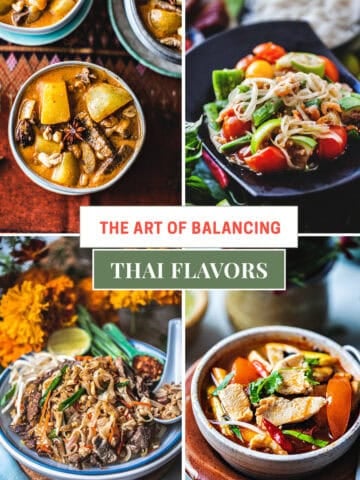

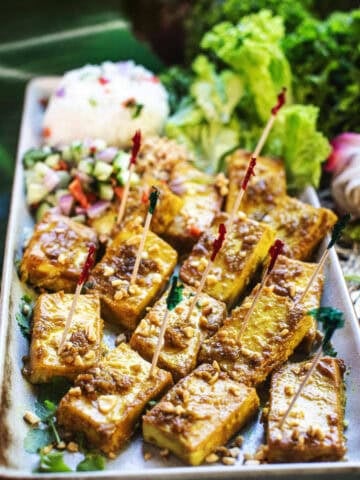



Chae says
Your thorough instructions on preparing fresh ingredients always instill confidence in us in attempting to handle new materials and process. We strive to eat healthy and avoid processed food items, and your instructions are vital to our endeavor.
C says
I love that you offer options for us to make pandan extract from the frozen leaves. So gorgeous and a unique taste. Yummm! And now I want to make enough to have ice cubes in the freezer for future recipe.